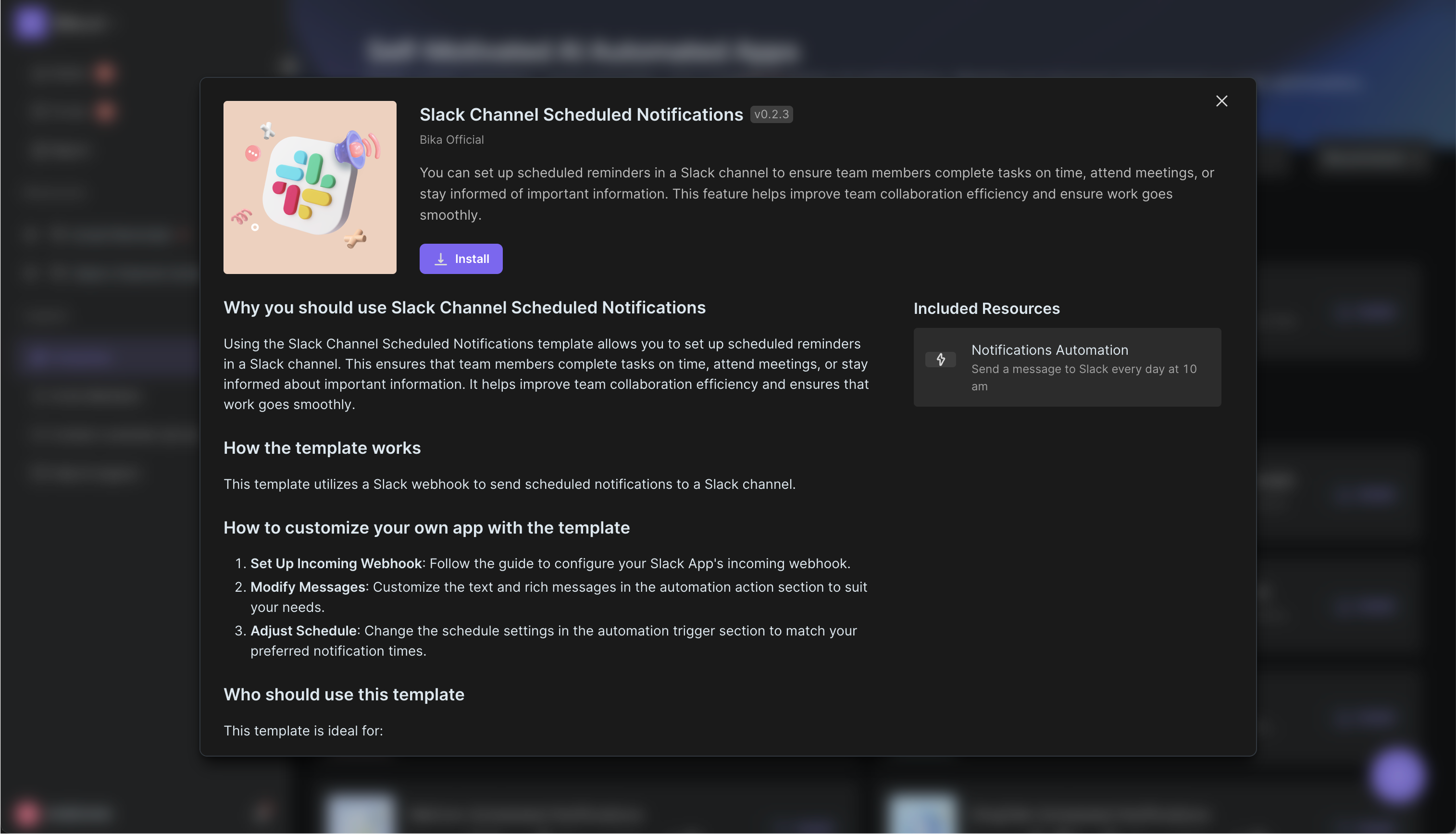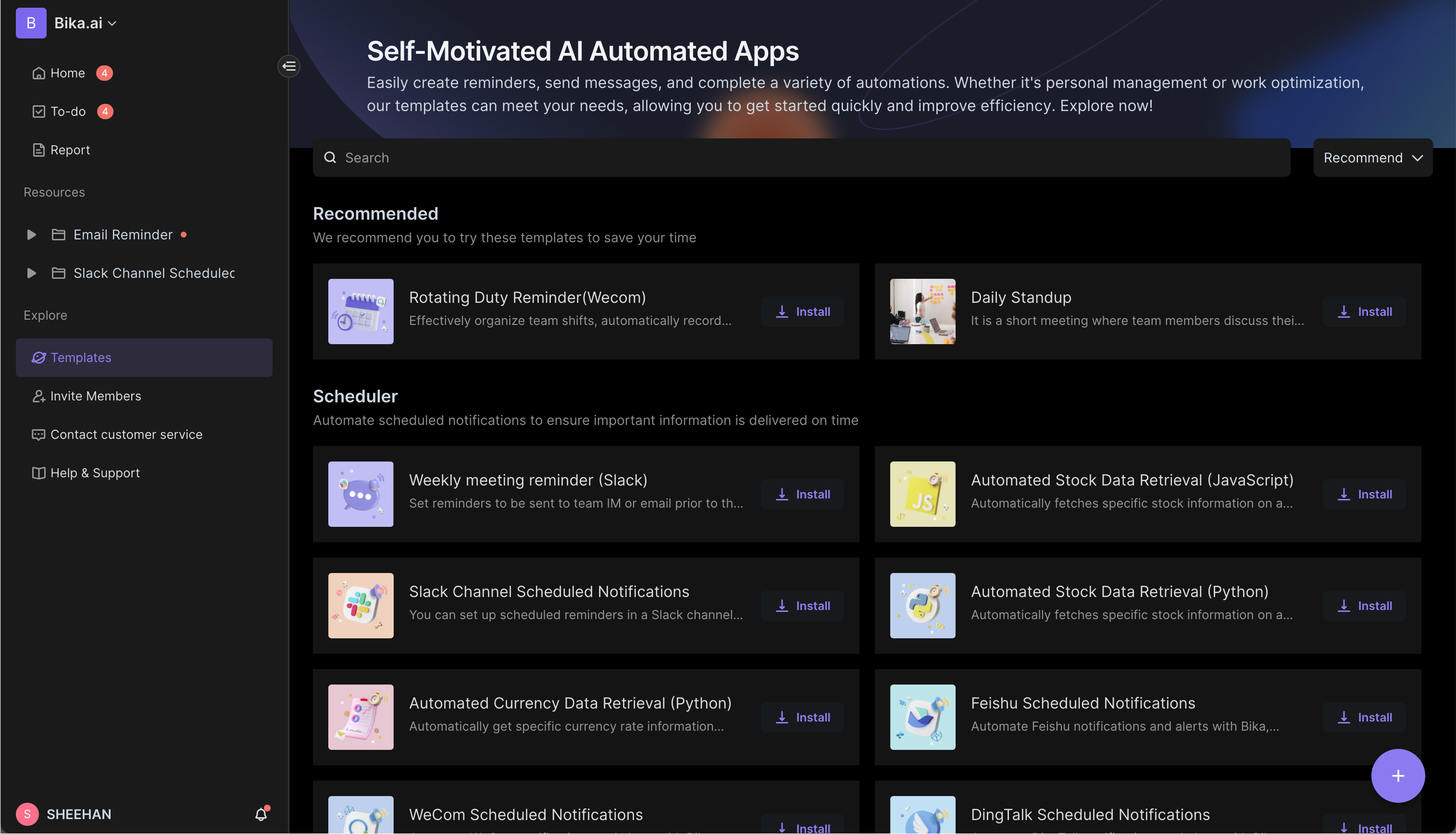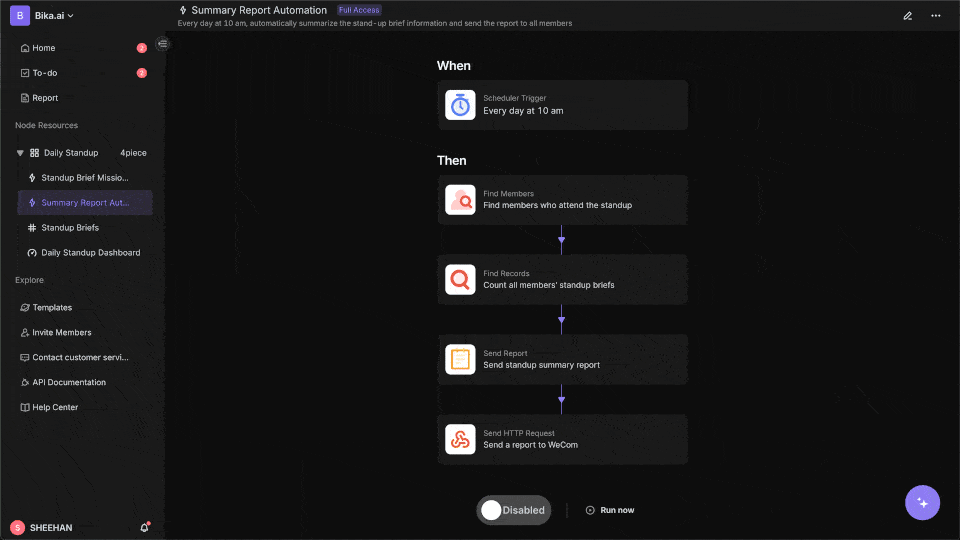
Unleash Collective Intelligence: How Agent Swarm & Bika.ai are Revolutionizing AI Automation
The Dawn of Collective Intelligence: Understanding Agent Swarm
Artificial Intelligence has come a long way from its humble beginnings. Initially, single - agent AI systems dominated the landscape, handling tasks with remarkable efficiency within their defined scope. However, as the complexity of real - world problems grew, the limitations of these solitary agents became more apparent. This realization has led to the emergence of a new paradigm: the agent swarm.
An agent swarm can be defined as a collection of multiple AI agents that collaborate with one another to achieve a common goal. These agents are not just individual entities working in isolation; they communicate, share information, and coordinate their actions. This collective approach allows them to exhibit emergent behaviors that are far more powerful than what any single agent could achieve on its own.
The concept of agent swarms is gaining traction for several reasons. Firstly, in a world where data is abundant and problems are multifaceted, the ability to break down complex tasks into smaller, manageable parts and distribute them among multiple agents is invaluable. Secondly, agent swarms offer enhanced robustness. If one agent fails, the others can often compensate, ensuring that the overall goal is still achievable.
:::: key-takeaways ::::
- An agent swarm is a group of multiple AI agents that work together towards a common goal.
- These agents communicate and coordinate, leading to emergent behaviors beyond individual capabilities.
- Agent swarms are becoming popular due to their ability to handle complex tasks and their robustness. ::::
Beyond Single Agents: How Agent Swarms Work
In an agent swarm, the interaction between agents is governed by a set of communication protocols. These protocols enable agents to exchange information about their current state, the tasks they are working on, and any relevant data they have gathered. For example, in a swarm of agents working on a large - scale data analysis project, one agent might discover a pattern in a subset of the data and communicate this finding to the other agents.
Task decomposition is another crucial aspect. Complex problems are broken down into smaller sub - tasks, with each agent taking on one or more of these sub - tasks. For instance, in a supply chain optimization problem, one agent could be responsible for analyzing inventory levels, another for transportation routes, and yet another for demand forecasting.
Collaboration among agents is what truly sets agent swarms apart. They work together, sharing resources and expertise, to solve the overall problem. This collaboration often leads to emergent behavior. Emergent behavior is the phenomenon where the collective actions of the agents result in a behavior or outcome that was not explicitly programmed into any individual agent. For example, in a swarm of drones used for mapping an area, the drones might self - organize into an optimal formation for covering the entire area, even though no single drone was programmed to form that specific formation.
When compared to traditional single - agent AI systems, agent swarms have several advantages. Single - agent systems are often limited by their fixed set of rules and capabilities. If a problem requires a different approach or additional knowledge, the single - agent system may struggle. In contrast, agent swarms can adapt more easily. They can learn from each other, share new strategies, and adjust their behavior based on the changing requirements of the problem. Additionally, agent swarms are more robust. A single - agent system that encounters an error or failure may come to a complete halt, but in an agent swarm, the remaining agents can continue the task.

The Promise and Potential Applications of Agent Swarms
Agent swarms have the potential to revolutionize a wide range of industries.
In complex scientific research, such as drug discovery, agent swarms can be used to analyze vast amounts of chemical data. Each agent could focus on a different aspect, like the interaction of a particular class of molecules or the prediction of side - effects. This distributed approach can significantly speed up the drug discovery process. In climate modeling, swarms of agents can handle different components of the climate system, such as ocean currents, atmospheric conditions, and land - use changes, to create more accurate models.
Automated enterprise workflows and supply chain optimization are also prime areas for agent swarm applications. Agents can monitor inventory levels, transportation schedules, and customer demand in real - time. They can collaborate to optimize routes, reduce costs, and ensure timely delivery. For example, if there is a sudden change in demand, the agents can quickly adjust the production schedule and transportation routes.
In financial market analysis and trading, agent swarms can analyze multiple data sources simultaneously. Some agents could focus on market trends, others on news sentiment analysis, and yet others on risk assessment. By working together, they can make more informed trading decisions.
Robotics and autonomous systems are another area where agent swarms shine. Drone swarms can be used for tasks like surveillance, search - and - rescue operations, and environmental monitoring. In smart factories, swarms of robotic agents can collaborate to assemble products more efficiently, adapt to changes in production requirements, and troubleshoot issues in real - time.
In gaming and virtual environments, agent swarms can create more realistic and dynamic non - player characters (NPCs). These NPCs can interact with each other and the player in more complex ways, enhancing the overall gaming experience.
Notable initiatives like OpenAI Swarm are exploring the potential of multi - agent systems. While OpenAI Swarm is still in development, it showcases the growing interest in this area.
For more information on agent swarms, you can refer to this research on Agent Swarms orchestrating the future of AI collaboration and this article on Agent Swarms as an evolutionary leap in intelligent automation.

From Theory to Practice: Building Your AI Team with Bika.ai
The concept of agent swarms, once confined to the realm of academic research, is now becoming a practical reality. Bika.ai is at the forefront of this movement, providing a platform that allows users to assemble their own AI teams, or agent swarms.
Bika.ai offers a user - friendly interface and a range of pre - built AI agents and functionalities. Users can combine these components to create customized agent swarms tailored to their specific tasks and workflows. Whether it's in the field of business, research, or any other domain, Bika.ai enables easy deployment and customization. For example, a marketing team could use Bika.ai to build an agent swarm that analyzes customer data, creates targeted marketing campaigns, and monitors the performance of those campaigns.

Spotlight on the Customer projects Template: An Example AI Team in Action
The Customer projects Template on Bika.ai serves as an excellent example of an agent swarm in practice.
💡 Why you should use Customer projects
This template is a game - changer for consulting companies, law firms, and sales teams. It helps calculate the hours worked that require compensation, gives a comprehensive overview of project progress, and creates a collaborative platform. This means that instead of dealing with the chaos of scattered information, teams can enjoy efficient project management.
👉 How the template works
The template consists of several components. The Projects Board is a dashboard that offers visual insights into project and task status. With its charts and numbers, it provides a quick overview of projects. The Projects Database manages project details such as status, start and end dates, notes, contacts, and tasks. The Task of Projects Database tracks task - specific information like task name, owner, start and end dates, status, estimated hours, client cost, and related files. The Contacts Database stores contact information including name, company, title, type, phone, email, website, and links to customer projects. All these components work in harmony to streamline the project management process and keep everything organized in one place.
🎯 How to use
Using the template is straightforward. First, access the template. Then, navigate to the Projects Board to get an overview of your projects. Next, use the Projects Database to manage project details. Track tasks in the Task of Projects Database and keep your contacts organized in the Contacts Database.
👉 Who should use this template
This template is ideal for project managers aiming to streamline their processes and monitor project progress. Sales teams who need to manage customer projects and track their status will also find it extremely useful. In general, anyone involved in project management, customer management, or task management can benefit from this template.
⭐ Key Features of This Template
It offers comprehensive project management, allowing users to manage all aspects of their projects from start to finish. Task tracking ensures that individual tasks and their progress are closely monitored. Contact management makes it easy to store and access contact information. The visual dashboards provide a quick overview of projects and tasks with charts and numbers.
🔧 Frequently Asked Questions
- How do I add a new project?
- Navigate to the Projects Database and fill in the required details.
- Can I customize the status options for projects and tasks?
- Yes, you can modify the status options in the respective database fields.
- How do I link a task to a project?
- In the Task of Projects Database, use the 'Projects' field to link it to the appropriate project in the Projects Database.
Users can leverage this template as it is or adapt it for different domains. For example, a software development team could modify it to manage their development projects, tracking tasks like coding, testing, and bug - fixing.
Try the Customer projects Template
The Future is Collaborative: Empowering Users with Agent Swarms
Agent swarm technology has the potential to transform the way we approach problem - solving. By moving from individual AI tools to coordinated AI teams, we can achieve enhanced efficiency and solve more complex problems. Platforms like Bika.ai are democratizing access to this powerful technology, allowing users from various backgrounds to build their own AI teams.
The value proposition is clear: instead of relying on a single AI agent with limited capabilities, users can now create a swarm of agents that work together synergistically. This not only improves problem - solving but also opens up new possibilities in automation.
We encourage readers to explore Bika.ai and start building their own AI teams. By doing so, they can redefine their approach to automation and stay ahead in an increasingly competitive world.

FAQ
Q: What is the main advantage of an agent swarm over a single - agent AI system? A: Agent swarms offer enhanced robustness, as if one agent fails, others can compensate. They can also handle more complex tasks by decomposing them and collaborating, while single - agent systems are often limited by their fixed rules and capabilities.
Q: How can Bika.ai help in building an agent swarm? A: Bika.ai provides a user - friendly platform with pre - built AI agents and functionalities. Users can combine these components to create customized agent swarms tailored to their specific tasks and workflows, enabling easy deployment and customization.
Q: Who can benefit from using the Customer projects template on Bika.ai?
A: Project managers, sales teams, and anyone involved in project management, customer management, or task management can benefit from this template. It helps in calculating compensable hours, providing project overviews, and creating a collaborative platform for efficient project management.

Recommend Reading
- Grow Faster, Work Less: Top Marketing Automation Tools for Startups
- Unleashing the Power of Agent Swarm: Building Your Dream AI Team for Unprecedented Success
- Choosing the Right AI Content Detector: A 2025 Comparison of Top Tools
- Automating Investor Deal Flow: Unveiling the Best Email Client for Mac
- Beyond ChatGPT: Choosing the Right AI Tool for Customer Sentiment Analysis Automation - Bika.ai Compared